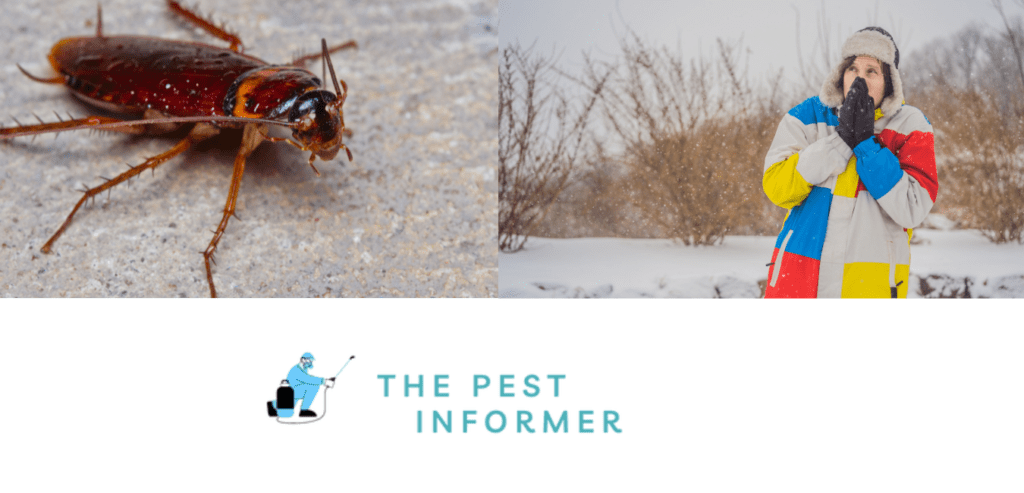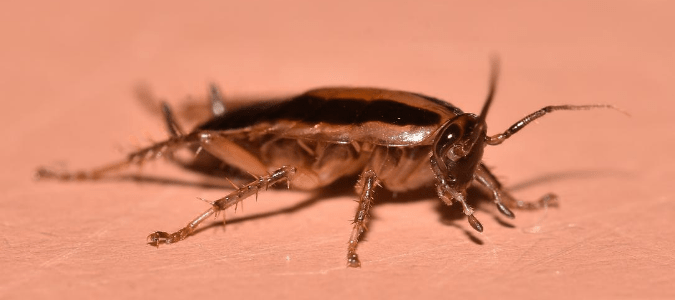Are you tired of constantly battling against those pesky roaches in your home? Wondering if there is any hope of ever getting rid of them for good? Well, you’re in luck! In this article, we’ll explore the age-old question of whether roaches ever completely go away. Discover the surprising facts and expert insights that might just give you a glimmer of hope in your fight against these resilient critters. So, don’t despair and keep reading to find out if there’s light at the end of the roach-infested tunnel!
Factors That Influence Roach Population
Roaches, like any other organisms, require certain environmental conditions to thrive and multiply. Understanding these factors that influence roach populations can help in developing effective strategies for prevention and control.
Availability of Food and Water
Roaches are primarily attracted to areas with ample food and water sources. They are scavengers and can feed on a wide range of organic matter, including leftover food, crumbs, grease, and even pet food. Additionally, these pests require a reliable water supply to survive. Any place that offers abundant food and water is likely to become an inviting spot for roaches.
Access to Shelter and Harborage
Roaches seek shelter and harborage to protect themselves from predators and harsh weather conditions. They are experts at finding tiny cracks, crevices, and hidden spaces within homes and buildings to establish their nests. Cluttered and messy areas provide numerous hiding spots for roaches and make it easier for them to reproduce and thrive.
Suitable Climate and Temperature
Roaches prefer warm, humid environments that provide favorable conditions for their survival. They can tolerate a wide range of temperatures, but they thrive in temperatures between 70 and 80 degrees Fahrenheit. Roaches are more commonly found in areas with high humidity, making bathrooms, kitchens, and basements prime locations for infestation.
Breeding Rate and Reproduction
One of the key factors contributing to the persistence of roach populations is their impressive breeding rate. Depending on the species, a female roach can lay multiple egg capsules, each containing up to 40 eggs. These capsules are often hidden in secluded areas, making it challenging to identify and eliminate them. As a result, a single roach infestation can quickly turn into a major problem if left unchecked.
Effectiveness of Pest Control Measures
The effectiveness of pest control measures plays a crucial role in determining the size and persistence of roach populations. If the chosen methods and products are not sufficient to eliminate the infestation, roaches may continue to thrive and multiply. Additionally, ineffective pest control practices can lead to pesticide resistance in roaches, making it even more challenging to eradicate them.
Resilience of Roaches
Roaches are known for their resilience and ability to survive in various conditions. Understanding the factors that contribute to their resilience is essential in developing successful pest control strategies.
Survival Skills and Adaptability
Roaches possess impressive survival skills and adaptability that allow them to thrive in diverse environments. They can go without food for up to a month, survive for a week without water, and even withstand extreme temperatures. Additionally, roaches can flatten their bodies, making it easier for them to fit into tight spaces and escape from potential threats.
Ability to Resist Pesticides
Over time, roaches have developed resistance to many common pesticides and insecticides. This resistance is often the result of prolonged exposure to the same chemicals. When roaches survive pesticide treatments, they pass on their genes to the next generation, contributing to pesticide resistance. As a result, it becomes necessary to regularly rotate and use different types of pesticides to combat resistant roaches effectively.
Evolutionary Strategies for Survival
Roaches have evolved various strategies that help them survive and persist. For example, they have an excellent sense of taste, allowing them to detect potential threats in their food sources. They also have a rapid reproduction rate, allowing them to quickly bounce back from population declines. Additionally, roaches have a strong aversion to light, enabling them to hide and avoid detection during daytime.
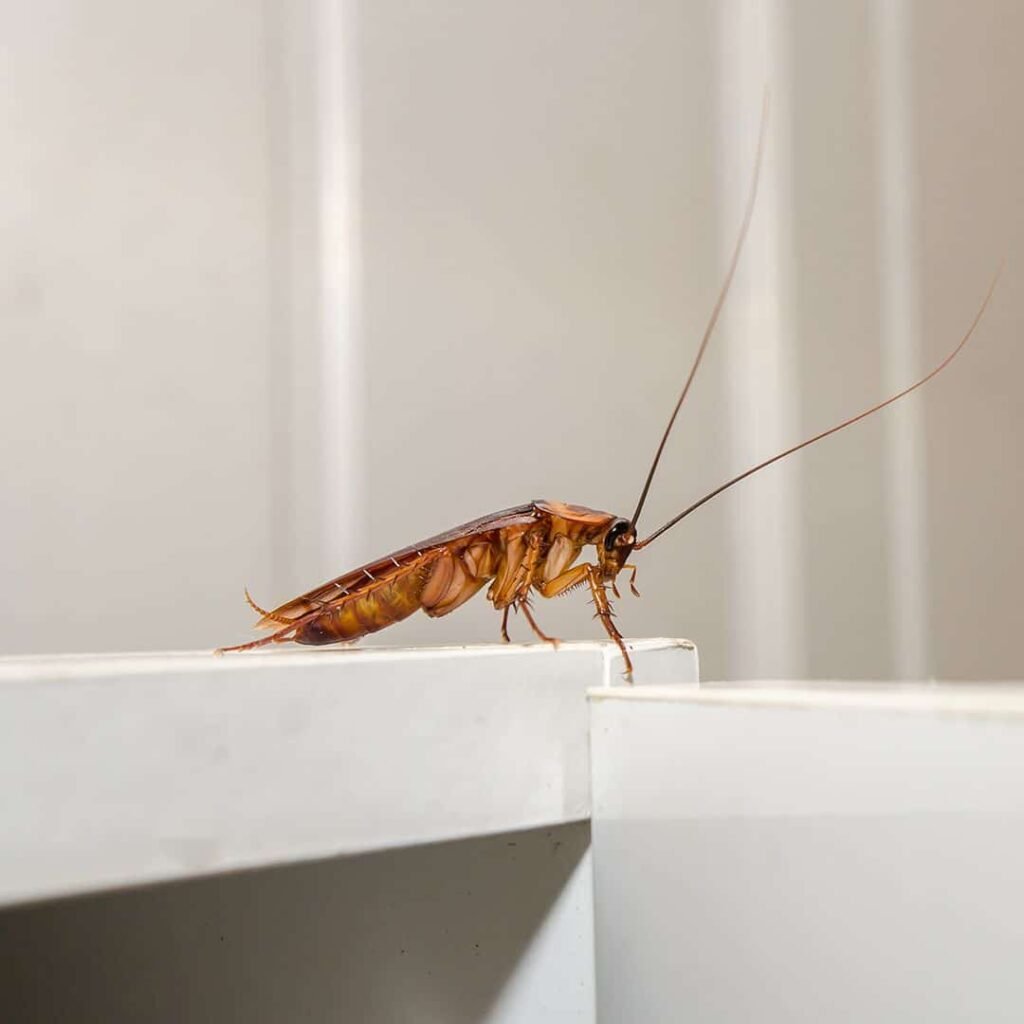

Why Roaches Can Be Persistent
Roaches are notorious for their persistence and ability to withstand numerous extermination efforts. Several factors contribute to their tenacity and make them difficult to eradicate completely.
Extensive Infestation and Hidden Nests
Roach infestations are often more extensive than they initially appear. These pests can establish multiple hidden nests throughout a property, making it challenging to find and eliminate all of them. Even if one nest is successfully removed, surviving roaches may disperse and create new nests, leading to a recurring infestation.
Egg Capsules and Multiple Generations
Roaches reproduce rapidly, and their egg capsules can contain up to 40 eggs. These capsules are often concealed in hard-to-reach areas, such as wall voids, behind appliances, or inside furniture. When the eggs hatch, multiple generations of roaches can emerge simultaneously, intensifying the infestation and making it difficult to eliminate all stages of their life cycle effectively.
Scavenging and Opportunistic Behavior
Roaches are skilled scavengers and opportunistic feeders. They can feed on a wide variety of organic matter, allowing them to survive and reproduce even in the absence of easily accessible food sources. Roaches can invade pantries, garbage cans, and even pet food bowls, exploiting any available food resources in their surroundings.
Ability to Survive without Food and Water
Roaches are incredibly resourceful when it comes to survival. They can survive for long periods without access to food and water. This ability allows them to withstand pest control efforts that aim to starve them. Roaches can endure unfavorable conditions and wait for the right opportunity to resume their activities and population growth.
Factors Affecting Roach Elimination
To effectively eliminate roach infestations, it is important to consider various factors that influence the success of pest control efforts.
Proper Sanitation and Hygiene Practices
Maintaining proper sanitation and hygiene is crucial in minimizing food and water sources that attract roaches. Regularly cleaning up spilled food, promptly fixing plumbing leaks, and storing food in secure containers can significantly reduce the availability of resources for roaches. By removing these attractants, it becomes more challenging for roaches to establish and sustain their populations.
Sealing Entry Points and Blocking Access
Roaches can enter buildings through tiny cracks, gaps, and crevices. By sealing these entry points, it becomes harder for roaches to infiltrate homes and establishments. Using caulk or other appropriate sealants to close off potential entryways can help prevent the ingress of roaches and reduce the likelihood of infestation.
Regular Cleaning and Removal of Clutter
Regular cleaning and decluttering are essential in eliminating roach harborage sites. Roaches thrive in messy and cluttered areas, as these provide ample hiding spots. By keeping spaces clean and removing unnecessary clutter, you create a less hospitable environment for roaches, reducing their chances of survival.
Effective Pest Management Strategies
The success of pest control measures significantly depends on employing effective strategies. Utilizing a combination of baits, insecticides, and growth regulators can target different stages of the roach life cycle. Integrated Pest Management (IPM) techniques, which involve a comprehensive approach to pest control, can be highly effective in reducing roach populations.
Professional Extermination Services
In cases of severe roach infestations or persistent problems, seeking professional extermination services is often necessary. Pest control professionals have the expertise, knowledge, and specialized equipment to address even the most challenging roach problems. They can identify the extent of the infestation, develop a customized treatment plan, and ensure the eradication of roaches from your property.
Prevention and Control Measures
Implementing preventive measures and effective control strategies are vital in managing roach populations and minimizing infestations.
Identifying and Eliminating Food Sources
Roaches are drawn to easily accessible food sources. By identifying and eliminating these sources, you can make the environment less attractive to roaches. Store food in sealed containers, clean up spills immediately, and dispose of garbage regularly in tightly sealed bins to minimize the availability of food that can sustain roach populations.
Fixing Plumbing Leaks and Eliminating Standing Water
Roaches are dependent on water for survival. By promptly fixing plumbing leaks and eliminating standing water, you can reduce their access to this vital resource. Check pipes, faucets, and drains for leaks, ensure proper drainage, and remove any standing water from your premises. This helps create an environment that is less conducive to roach survival.
Sealing Cracks and Crevices
Sealing entry points can prevent roaches from infiltrating your home or establishment. Inspect your property for cracks, gaps, and crevices that may serve as potential entryways for roaches. Seal these openings using caulk, weatherstripping, or other appropriate sealants to create a barrier that denies roaches access.
Use of Baits and Insecticides
Strategically placing baits and using targeted insecticides can effectively reduce roach populations. Baits offer an attractive food source that contains insecticide, which roaches carry back to their nests, effectively eliminating other members of the population. Insecticides can be used as spot treatments or as part of a comprehensive pest control program targeting specific areas where roaches are present.
Traps and Monitoring Devices
Traps and monitoring devices can provide valuable information about the extent and location of a roach infestation. By strategically placing traps near known harborage areas or along common roach pathways, you can monitor the population and identify patterns of activity. This information can then guide your control efforts and help in determining the effectiveness of your chosen methods.
Signs of Successful Roach Control
Successfully controlling roach populations can be determined through various indicators.
Decreased Sightings and Activity
One of the first signs of successful roach control is a noticeable decrease in roach sightings and activity. As you implement control measures and the population declines, the number of roaches seen during daytime or in frequently visited areas should significantly reduce. This reduction in visible roaches suggests that your efforts are proving effective.
No New Damage or Infestations
Once a roach infestation is under control, there should be no new damage or fresh signs of infestation. Roaches cause damage to various materials, including food packaging, books, and electrical wiring. By eliminating roaches and preventing new ones from entering, you should not encounter new physical damage or observe signs of an ongoing infestation.
Confirmation through Professional Inspection
To confirm the success of roach control efforts, it is advisable to seek a professional inspection. Pest control professionals can thoroughly assess your property, identify any remaining signs of an infestation, and provide expert advice regarding ongoing prevention and control measures. Their confirmation serves as a reliable indicator that your proactive actions have effectively managed the roach problem.
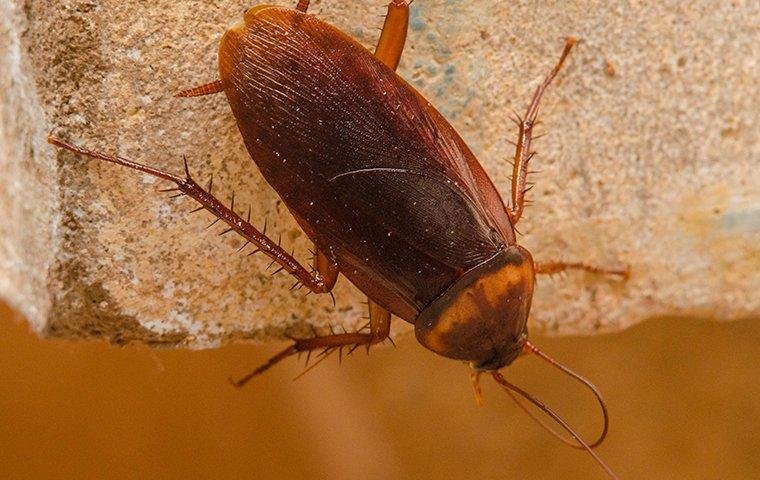

Challenges in Complete Roach Eradication
While it is possible to significantly reduce roach populations through effective control measures, complete eradication can be challenging due to various factors.
Resilience and Adaptability of Roaches
Roaches possess remarkable resilience and adaptability, allowing them to survive and rebound even after severe control measures. Their ability to withstand adverse conditions, reproduce rapidly, and develop resistance to pesticides contributes to the challenge of achieving complete eradication.
Infestation from Neighboring Properties
Roaches can easily migrate from neighboring properties, especially in close-knit residential areas or commercial buildings. If neighboring properties are not adequately addressing their roach problems, it becomes difficult to prevent reinfestation. Cooperating with neighbors and implementing preventive measures collectively can help reduce the risk of roaches reintroducing themselves.
Inadequate Pest Control Practices
Ineffective pest control practices, such as using subpar products or not following appropriate application methods, can impede successful roach eradication. Inadequate pest control measures may only temporarily suppress the population, allowing roaches to rebound and reestablish their presence. It is essential to invest in quality products and follow recommended procedures for the best chance of success.
Incomplete Identification and Treatment
Misidentifying the type of roach species or underestimating the size of the infestation can hinder eradication efforts. Different roach species have unique habits, behaviors, and preferences, requiring specific treatment approaches. Failing to accurately identify the species or address all potential hiding spots can result in incomplete treatment, leaving some roaches to repopulate and continue causing problems.
Dealing with Reinfestation
Despite successful control efforts, there is always a possibility of reinfestation. However, by adopting proactive measures and remaining vigilant, you can minimize the likelihood of roaches returning.
Continued Vigilance and Maintenance
Maintaining a vigilant approach and practicing ongoing prevention measures is key in preventing reinfestation. Conduct regular inspections of your property, paying attention to potential entry points and any signs of roach activity. Stay committed to proper sanitation, hygiene practices, and general maintenance, as these are vital in deterring roaches from reestablishing themselves.
Regular Inspections and Monitoring
Regular inspections and proactive monitoring can help detect any signs of roach activity early on. Keep an eye out for droppings, egg capsules, or any physical damage that may indicate the presence of roaches. Monitor traps and monitoring devices to assess the population and identify any resurgence. By detecting signs of infestation early, you can swiftly take action to prevent it from escalating.
Prompt Action at the First Sign of Infestation
In the event of a suspected reinfestation, prompt action is crucial. Do not delay in implementing control measures and seeking professional assistance if necessary. By swiftly addressing any signs of a resurgence, you can prevent roach populations from flourishing and mitigate the risk of a full-blown infestation.
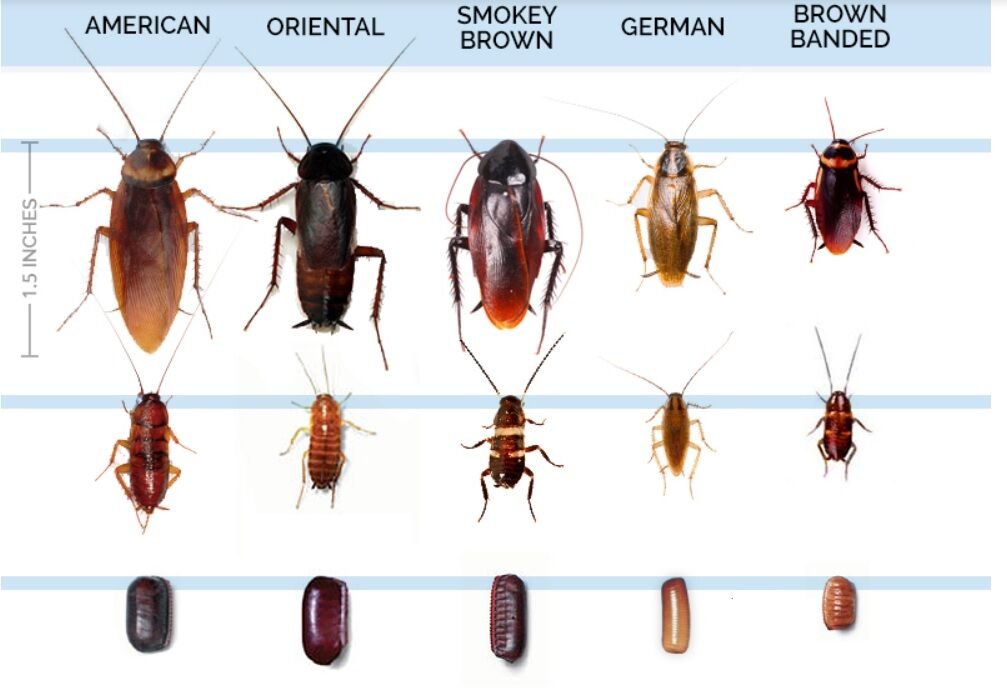

Frequently Asked Questions
How Long Does It Take to Get Rid of Roaches?
The duration required to eliminate roaches depends on several factors, including the severity of the infestation, the chosen control methods, and the level of cooperation in implementing preventive measures. While initial results may be noticeable within a few weeks, complete eradication may take several months. Consistency in applying control strategies and ongoing maintenance is essential for long-term success.
Can Roaches Come Back?
Yes, roaches can come back, especially if the root causes and attractants are not addressed. Without proper prevention measures, neighboring infestations, or ongoing poor hygiene practices, roaches can easily find their way back. Regular inspections, maintenance, and proactive prevention efforts are essential in keeping roaches at bay.
What are Common Mistakes in Roach Control?
Some common mistakes in roach control include using ineffective or improper pesticides, neglecting proper sanitation practices, and failing to identify and seal entry points. Additionally, underestimating the severity of an infestation, prematurely discontinuing control measures, or not seeking professional help when necessary can hinder eradication efforts.
Are DIY Methods Sufficient for Roach Elimination?
DIY methods can be helpful in managing minor roach problems, especially when combined with proper sanitation practices and ongoing maintenance. However, for severe or persistent infestations, consideration should be given to seeking professional extermination services. Pest control professionals have the knowledge, experience, and resources to effectively eradicate roaches and implement long-term prevention strategies.
Conclusion
Roaches are resilient pests that can persist and multiply if the conditions are conducive to their survival. By understanding the factors that influence roach populations, their adaptability, and the challenges in eliminating them completely, homeowners and businesses can develop comprehensive prevention and control strategies. Through proper sanitation, effective pest management practices, and ongoing vigilance, it is possible to reduce roach infestations and maintain a roach-free environment. Remember, persistence and consistency are key in successfully managing roach populations and minimizing the risks associated with their presence.
Your Expert in Animal Control and Extermination. Trust our experience for humane, effective pest management, protecting your property and ensuring peace of mind with Michael S.



